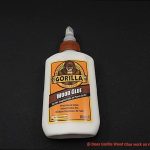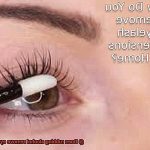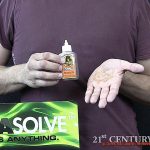Picture this: you’ve just finished painting your nails with a gorgeous shade of polish, only to realize that pesky nail glue is clinging on for dear life. We’ve all been there – stuck fingers, sticky residue – it’s a manicure nightmare.
But fret not. There’s a secret weapon in your arsenal that can tackle this sticky situation head-on: rubbing alcohol. This everyday hero is about to become your new best friend when it comes to battling stubborn nail glue. It’s time to say goodbye to frustration and hello to flawless nails once again.
In this blog post, we’ll delve into the magical powers of rubbing alcohol. From banishing adhesive remnants in a flash to restoring your nails’ natural beauty, we’re here to spill the tea on how rubbing alcohol can save your nail game.
So, get ready, because we’re about to unveil the ultimate solution for all your nail care woes. Say farewell to those infuriating nail glue mishaps and prepare yourself for a world where perfect nails are just a swipe away. Let’s dive in.
The properties of rubbing alcohol and how it can break down nail glue.
Contents
- 1 The properties of rubbing alcohol and how it can break down nail glue.
- 2 Step-by-step guide on using rubbing alcohol to remove nail glue.
- 3 Tips and precautions for using rubbing alcohol safely on nails.
- 4 Alternative methods for removing stubborn nail glue.
- 5 Professional assistance for removing nail glue if rubbing alcohol doesn’t work.
- 6 Common mistakes to avoid when trying to remove nail glue with rubbing alcohol.
- 7 The importance of moisturizing and caring for your nails after using rubbing alcohol.
- 8 Types of nail glues that may be more resistant to solvents like rubbing alcohol.
- 9 Conclusion
Rubbing alcohol, also known as isopropyl alcohol, is a remarkable substance with unique properties that make it the ultimate tool for breaking down nail glue. In this article, we will delve into the science behind rubbing alcohol’s effectiveness and provide you with expert tips on achieving flawless, glue-free nails.
The Magic of Volatility:
One of the remarkable properties of rubbing alcohol is its high volatility. This means that it evaporates rapidly, enabling it to penetrate through layers of nail glue and reach the adhesive beneath.
As the alcohol molecules dissolve the glue by breaking its chemical bonds, they carry away the dissolved particles when they evaporate. This efficient process makes removing nail glue significantly easier and more efficient.
Solvency: The Superpower of Solvents:
Rubbing alcohol acts as a solvent for nail glue, which contains cyanoacrylate – a resin known for forming a strong bond when exposed to moisture. Here’s where rubbing alcohol’s magic comes into play. It breaks down the cyanoacrylate molecules by weakening their bonds, effectively weakening the adhesive properties of the glue. This makes it much simpler to remove.
Low Surface Tension for Maximum Penetration:
Rubbing alcohol possesses another trick up its sleeve – low surface tension. This property allows it to spread easily across surfaces, ensuring close contact with the nail glue. As the alcohol seeps into the layers of glue, it efficiently breaks down the adhesive bonds and weakens their grip on your nails.
Concentration Matters:
Not all rubbing alcohols are created equal. For optimal results, choose a concentration of 70% or higher. Lower concentrations may not be as effective due to their higher water content.
How to Use Rubbing Alcohol to Remove Nail Glue:
- Soak a cotton ball or pad in rubbing alcohol.
- Gently press the soaked cotton onto the nail surface with glue, allowing the alcohol to penetrate for a few minutes.
- Use circular motions to gently rub the soaked cotton ball over the glue, loosening it in the process.
- Repeat this process until all the glue is removed, applying more alcohol as needed.
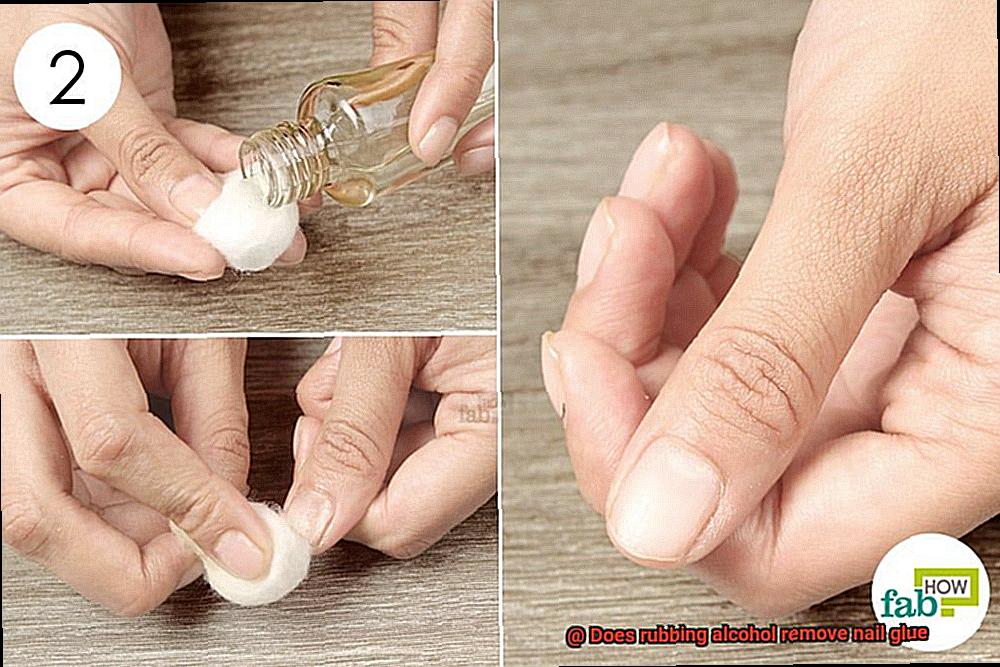
Note: Some nail glues are formulated to be more resistant to solvents like rubbing alcohol. If you encounter stubborn glue that won’t budge, consider seeking professional assistance or trying alternative methods.
Post-Treatment Care:
After using rubbing alcohol, remember to moisturize your nails and cuticles. Rubbing alcohol can dry them out, so nourish them with a hydrating oil or cream to maintain their health and prevent damage.
Step-by-step guide on using rubbing alcohol to remove nail glue.
Step 1: Gather Your Arsenal
Before jumping into the process, ensure you have all the necessary tools within arm’s reach. Grab a bottle of rubbing alcohol, cotton balls or pads, a clean cloth, and a nail file or buffer. Trust me; you’ll thank me later.
Step 2: Test, Test, Test.
Before applying rubbing alcohol to the affected area, it’s crucial to conduct a spot test on a small, inconspicuous spot. This precautionary measure ensures that the material doesn’t react poorly to alcohol—better safe than sorry.
Step 3: Soak and Dab
Soak a cotton ball or pad with rubbing alcohol, ensuring it’s saturated without dripping. Gently dab the soaked cotton onto the area where the nail glue clings stubbornly. Allow the magic of rubbing alcohol a few minutes to soften up that glue.
Step 4: Wipe Away

With a clean cloth or paper towel, gently wipe away the softened glue. Remember, no vigorous scrubbing. Our aim is to remove the glue without causing any damage.
Step 5: Repeat If Necessary
If traces of glue remain, don’t panic—simply reapply steps 3 and 4 until every last vestige of adhesive disappears. Patience is paramount here.
Step 6: Smooth It Out
Once all the glue is gone, take a moment to appreciate your triumph. But wait. We’re not finished just yet. Utilize a nail file or buffer to smooth out any rough patches or residue left behind. Voila. Your nails are now free from glue and ready to dazzle.
Step 7: Clean Up
To conclude, clean the area with warm soapy water and ensure it’s thoroughly dried. This step guarantees the complete removal of any residual alcohol or glue.
Tips and precautions for using rubbing alcohol safely on nails.
When it comes to maintaining healthy nails, using rubbing alcohol can be a game-changer. Whether you’re struggling with stubborn nail glue or want to remove residue from nail polish, rubbing alcohol is a go-to solution. However, it’s important to use it safely and take necessary precautions. In this comprehensive guide, we’ll explore five essential tips for using rubbing alcohol on your nails while keeping them healthy and beautiful.
Choose the Right Rubbing Alcohol:
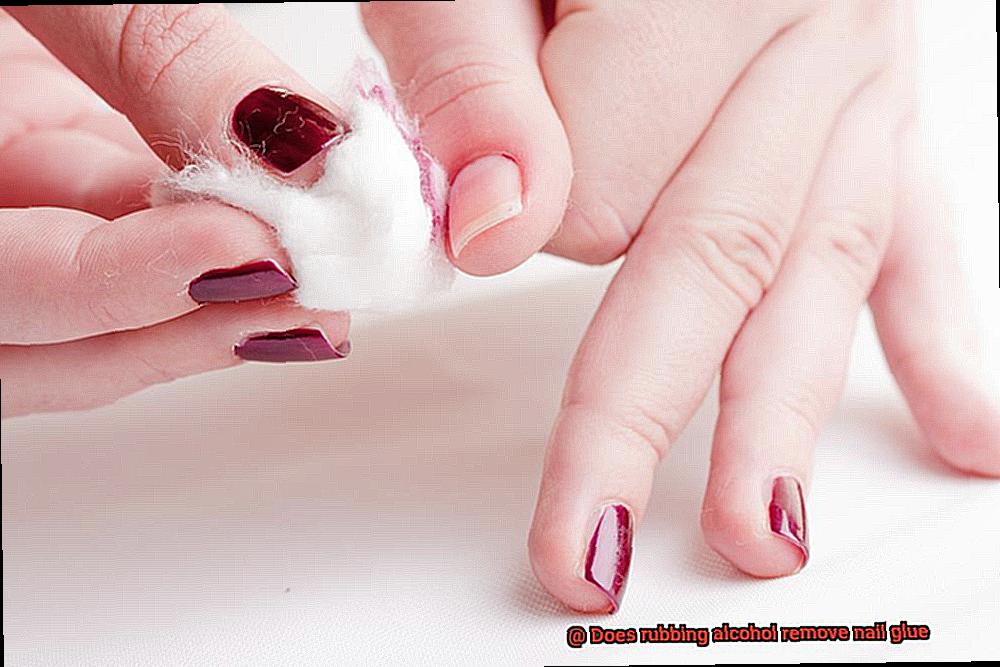
First and foremost, it’s crucial to select the right rubbing alcohol for your nail care routine. Opt for high-quality rubbing alcohol that is specifically formulated for external use. Avoid products that contain additional chemicals, as they may be harmful to your nails.
Dilution is Key:
If you find that rubbing alcohol is too strong or harsh on your nails, diluting it with water can help create a milder solution. Mix equal parts of rubbing alcohol and water to ensure gentleness while effectively removing nail glue or polish residue.
Patch Test First:
Before applying rubbing alcohol to your entire nail, perform a patch test to check for any adverse reactions. Apply a small amount of the solution on a corner of your nail and wait a few minutes to observe any redness or irritation. If there are no negative effects, it’s safe to proceed.
The Cotton Ball Technique:
To apply rubbing alcohol on your nails, use a cotton ball or pad soaked in the solution. Gently rub the cotton ball over your nails, paying close attention to areas with glue residue. Avoid scrubbing too harshly, as this can damage your nail bed.
Handle with Care:
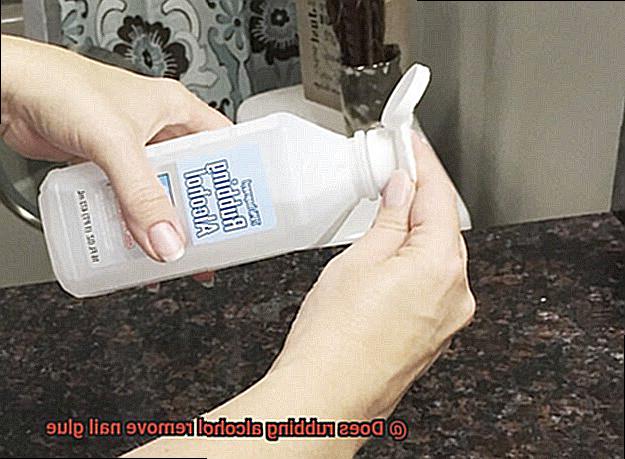
When using rubbing alcohol to remove nail glue, always treat your nails gently. Avoid scraping or picking at the glue, as this can weaken your nails. Instead, let the rubbing alcohol do its work and gently wipe away the softened glue.
Moisturize, Moisturize, Moisturize:
Rubbing alcohol can be drying to both your skin and nails. After using it to remove nail glue or polish residue, take the time to moisturize your hands and nails thoroughly. Apply a nourishing hand cream or cuticle oil to keep your nails hydrated and prevent them from becoming brittle.
Alternative methods for removing stubborn nail glue.
As an expert on alternative methods for removing nail glue, I’m here to share some tried-and-true techniques that will make your life easier. Say goodbye to frustration and hello to beautifully clean nails.
Acetone: The Ultimate Nail Glue Dissolver
Acetone, the mighty solvent found in nail polish removers, is your secret weapon against stubborn nail glue. Soak a cotton ball or pad with acetone and apply it directly to the glued area. Allow it to sit for a few minutes, letting its powerful properties work their magic. Then, unleash the gentle force of a manicure stick or an old toothbrush to effortlessly rub or scrape off the softened glue. Remember to moisturize afterward to counteract the drying effects of acetone.
Olive Oil: Nature’s Gentle Solution
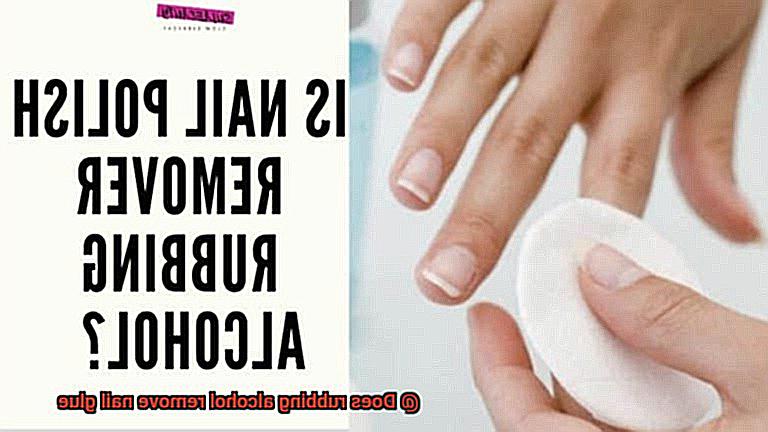
If you prefer a more natural approach, trust in the power of olive oil. Begin by indulging your nails in a warm water soak to loosen the grip of the glue. Then, apply a small amount of olive oil onto the affected area and let it penetrate the sticky situation. After a few minutes, feel the satisfaction as you peel off the softened glue using your fingers or a manicure stick, revealing nails that are free from residue.
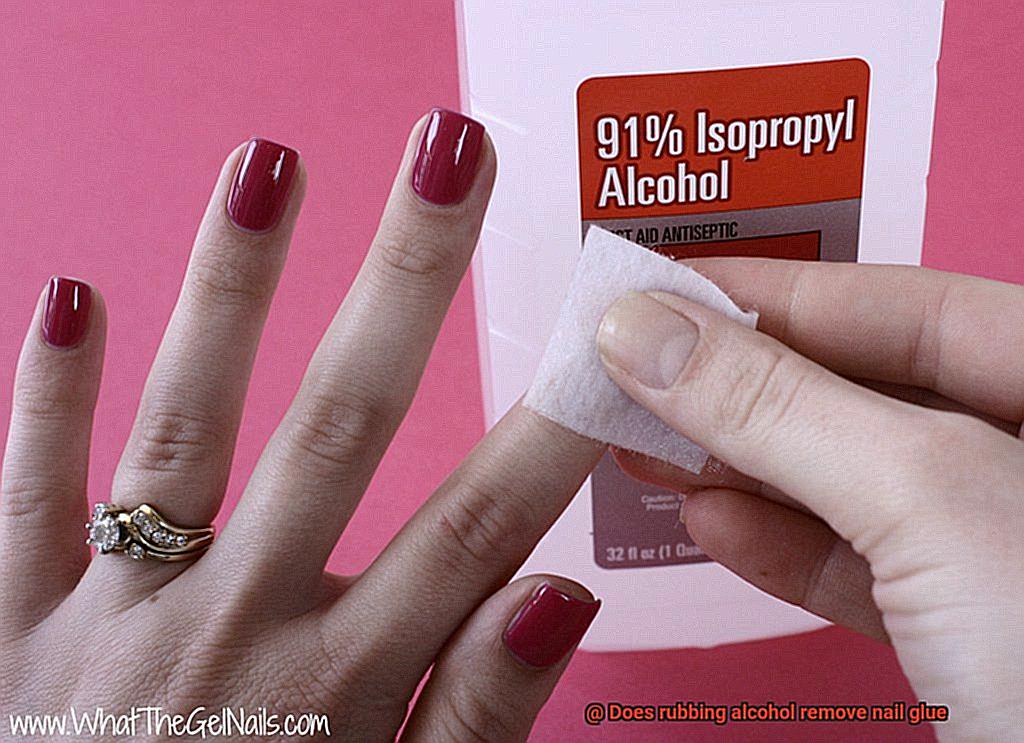
Lemon Juice: Acidic Powerhouse

Unleash the acidic power of lemon juice to break down nail glue with ease. Squeeze fresh lemon juice onto a cotton ball and watch as it transforms into your secret weapon against stubborn adhesive. Rub it onto the glued area and let it sit for a few minutes, allowing its potent properties to soften the glue’s grip. With precision and finesse, scrape off the softened glue using a manicure stick or an old toothbrush. Rinse your nails with warm water afterward to wash away any lingering residue.
Warm Water Soak: Simple Yet Effective
Sometimes, simplicity is the key to success. Immerse your nails in a basin or bowl filled with warm water and let the gentle heat work its magic. After a blissful 10-15-minute soak, feel the transformation as the stubborn nail glue softens. With the grace of a professional, employ a manicure stick or an old toothbrush in a gentle scrubbing motion to loosen and remove the softened glue.
Nail Polish Remover: The Classic Choice
If you possess a trusty bottle of nail polish remover, check if its impressive repertoire includes the ability to remove nail glue. Follow the instructions provided by the product and immerse a cotton ball or pad in its potent formula. With delicate precision, gently rub and remove the glue, reveling in the familiarity of this classic choice.
Professional assistance for removing nail glue if rubbing alcohol doesn’t work.
We’ve all experienced the frustration of trying to remove stubborn nail glue that simply won’t budge, no matter how vigorously we scrub with rubbing alcohol.
There is a solution to this sticky situation. When DIY methods fail, it’s time to turn to the professionals.
In this blog post, we will explore the benefits of seeking professional assistance for removing nail glue when rubbing alcohol doesn’t work.
Specialized Products and Techniques:
Nail salons and beauty supply stores are equipped with a range of specialized products and techniques designed specifically for removing stubborn nail glue. These professionals have access to acetone-based solutions and other professional-grade products that are more effective in breaking down the adhesive properties of the glue. With their expertise, they can ensure a thorough and efficient removal process.
Safe Removal without Damage:
One of the major advantages of seeking professional help is that nail technicians and estheticians have the knowledge and expertise to safely remove the glue without causing any damage to your natural nails.
They understand the importance of following proper instructions and will take necessary precautions to ensure that your nails remain healthy and intact throughout the process.
By entrusting your nails to professionals, you can avoid accidental harm or mishaps that may occur when attempting to remove the glue yourself.
Soaking and Specialized Tools:
In some cases, professional assistance may involve soaking your nails in a solution or using specialized tools to gently lift off the glue.
These techniques are gentle yet effective, ensuring that your nails are free from any residue without causing any harm or discomfort.
Professionals have the experience and skillset required to handle these methods with precision, providing you with optimal results.
Tailored Solutions:
Professionals who deal with nail glue removal on a regular basis have encountered various types of glues and know which removal methods work best for each. They can analyze the type of glue used on your nails and recommend the most appropriate solution for your specific situation. By tailoring their approach, they can guarantee a successful outcome and save you from potential trial and error.
Peace of Mind:
If you’re unsure about how to safely remove the glue yourself or worried about potential damage to your nails, seeking professional help provides peace of mind. It eliminates the risk of further complications and ensures that your nails are in expert hands. Instead of battling with stubborn nail glue on your own, you can relax knowing that professionals will handle the task efficiently and effectively.
Common mistakes to avoid when trying to remove nail glue with rubbing alcohol.
Removing nail glue can be a challenging task, but with the right approach, it can be done safely and effectively. One popular method is using rubbing alcohol to break down the adhesive properties of the glue. However, there are common mistakes that people make during this process. In this article, we will explore these mistakes and provide helpful tips to ensure successful nail glue removal while avoiding any potential pitfalls.
Scrubbing Too Hard:
One mistake to steer clear of is applying excessive pressure or scrubbing vigorously. This can damage your nails and surrounding skin. Remember, gentle circular motions are key when using rubbing alcohol. This allows the alcohol to penetrate the glue without causing harm.
Low Alcohol Concentration:
The effectiveness of rubbing alcohol in breaking down nail glue depends on its alcohol content. Using a low concentration will not yield desired results. Ensure you use rubbing alcohol with at least 70% alcohol content for optimal performance.
Avoid Open Wounds or Broken Skin:

Rubbing alcohol can sting and irritate open wounds or broken skin areas. If you have any cuts or wounds near the nail glue, it’s best to avoid using rubbing alcohol in those areas. Seek alternative methods for removal to prevent further discomfort or complications.
Keep Away from Flames or Heat Sources:
It’s crucial to keep rubbing alcohol away from open flames or heat sources as it is highly flammable. Make sure the area where you’re working with rubbing alcohol is well-ventilated and free from potential ignition sources to avoid accidents or fires.
Don’t Rely Solely on Rubbing Alcohol:
While rubbing alcohol can effectively remove nail glue, specialized nail glue removers are available on the market that are gentler on your nails and skin. Consider investing in these products if you frequently use nail glue or have sensitive skin for safer and more effective results.
The importance of moisturizing and caring for your nails after using rubbing alcohol.
We all adore a fresh manicure, but sometimes, stubborn nail glue refuses to budge. That’s when we turn to rubbing alcohol for help. While it effectively removes the glue, it can leave your nails feeling dry and brittle. Fear not, as I am here to emphasize the significance of moisturizing and caring for your nails after using rubbing alcohol.
Moisturize for Nourished Nails:
Rubbing alcohol can strip your nails of their natural oils and moisture, rendering them vulnerable to breakage. Thus, after removing the glue with rubbing alcohol, it is crucial to restore that vital moisture balance. Begin by rinsing your nails with water to eliminate any residue, and gently pat them dry with a soft towel.
Now, for the enjoyable part – moisturizing. Reach for a nourishing cuticle oil or cream that will replenish your nails’ moisture and foster healthy growth. Massage this elixir into your nails and cuticles to ensure maximum absorption. This simple step will prevent dryness, brittleness, and promote stronger, healthier nails.
Protect Your Nails:
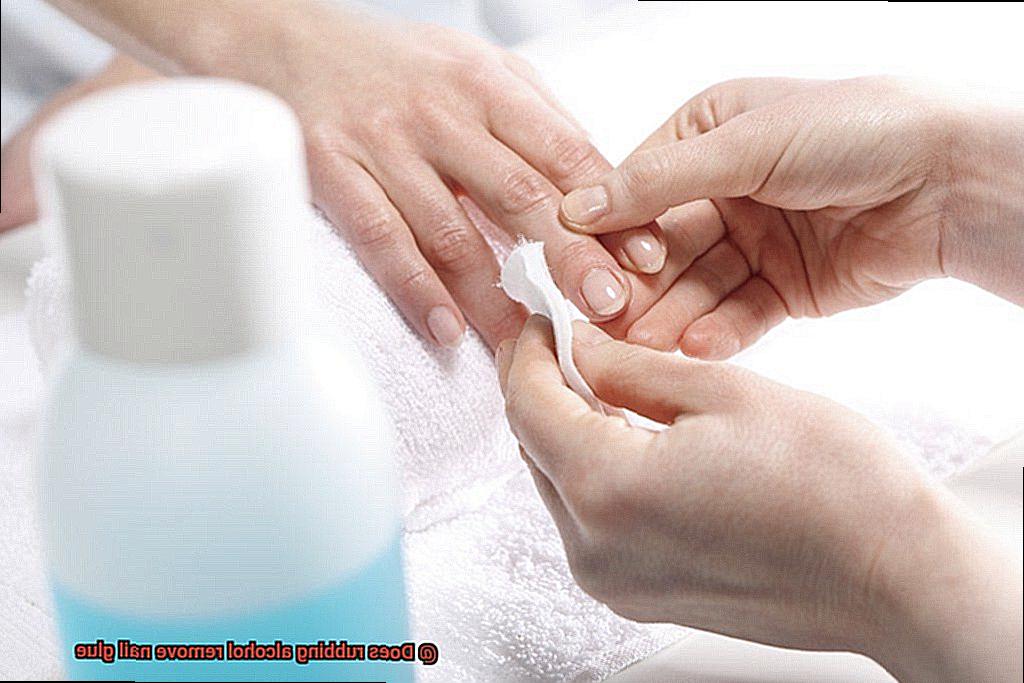
Moisturizing alone is insufficient; you must also shield your nails from further damage. Steer clear of harsh chemicals or excessive moisture that can deplete their natural oils even more. Wear gloves when undertaking household chores or working with chemicals to safeguard your nails from harm.
Healthy Habits for Healthy Nails:
Nail care extends beyond moisturizing and protecting – it encompasses maintaining a healthy lifestyle too. A balanced diet enriched with biotin, vitamin E, and calcium can bolster nail strength and growth. Indulge in eggs, nuts, spinach, and dairy products to keep your nails thriving from the inside out.
Do not forget to stay hydrated. Consuming ample water ensures that your nails remain internally hydrated, preventing them from becoming dry and brittle.
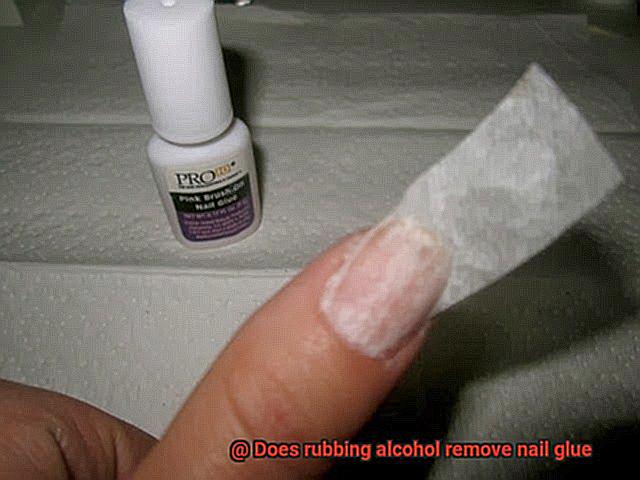
Hydration is the key to healthy nails, so grab that water bottle and sip away.
Handle with Care:
Lastly, treat your nails with the tenderness they deserve. Refrain from using them as tools for opening cans or scratching surfaces – let them serve as the beautiful accessories they are. Be gentle during your nail care routine and avoid excessive filing or buffing, as these actions can weaken your nails over time.
Types of nail glues that may be more resistant to solvents like rubbing alcohol.
Struggling to remove nail glue can be a frustrating experience, especially when it’s exposed to solvents like rubbing alcohol. Fortunately, there are nail glues available that exhibit increased resistance to solvents, making the removal process much easier. In this article, we will delve into the world of nail glues and explore five types that are known for their resilience against solvents such as rubbing alcohol.
Cyanoacrylate Glue – The Indomitable Adhesive:
For those seeking a nail glue that can withstand the powers of rubbing alcohol, cyanoacrylate glue, also known as “super glue,” is the ultimate choice. This adhesive forms an incredibly strong bond when exposed to moisture and dries quickly, making it ideal for nail extensions or repairs.
While rubbing alcohol may soften the glue slightly, it won’t completely dissolve it, ensuring a long-lasting hold that can endure daily activities.
Epoxy Adhesive – The Epitome of Strength:
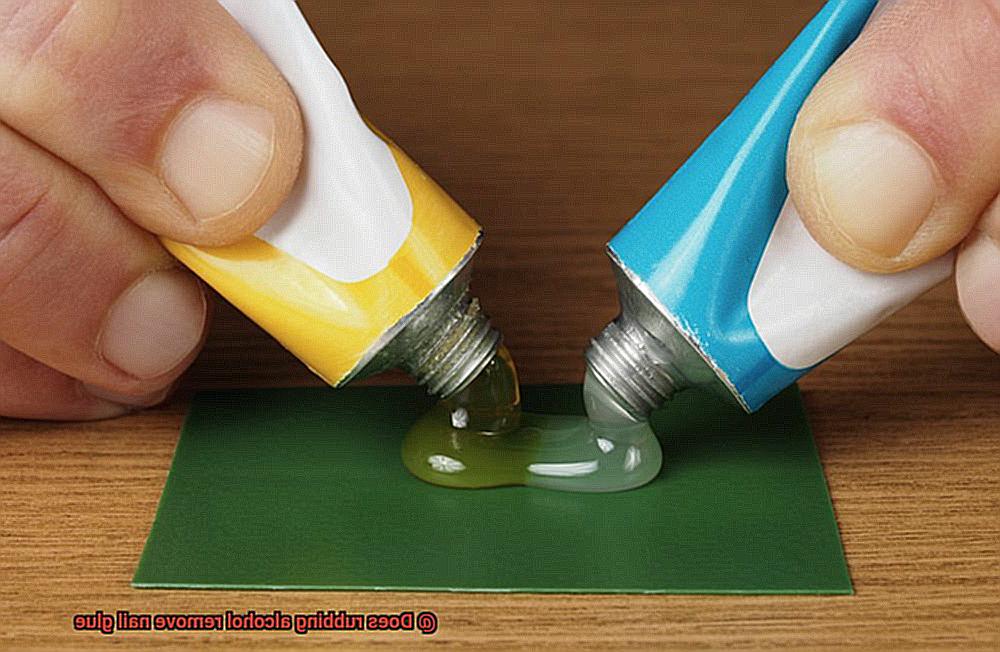
When it comes to strength and resistance, epoxy adhesives reign supreme. Composed of a resin and a hardener, epoxy adhesive creates an unyielding bond that can withstand harsh conditions and heavy loads. Though rubbing alcohol may have some effect on softening epoxy adhesive, its robust chemical composition ensures that it won’t be easily dissolved, providing a reliable hold for extended periods.
Specialized Solvent-Resistant Nail Glues:
To cater to individuals who frequently use acetone-based nail polish removers or other solvents, specialized solvent-resistant nail glues have been developed. These glues contain additional ingredients that enhance their resistance to solvents like rubbing alcohol. Look for products labeled as “non-acetone” or “solvent-resistant” when seeking a glue that won’t budge when exposed to these substances.
Rubber or Silicone-Infused Nail Glues:
Nail glues that incorporate rubber or silicone compounds into their formulations are another option for those seeking enhanced resistance to solvents. These additives create a barrier between the glue and the solvent, preventing it from being dissolved or weakened. By utilizing these glues, you can enjoy a stronger hold that is more resistant to solvents like rubbing alcohol.
UV-Curable Nail Glues:
UV-curable nail glues are a popular choice among nail professionals due to their ability to resist solvents like rubbing alcohol. These glues require exposure to ultraviolet light to cure, forming a durable bond that is highly resistant to solvents.
While they may require additional equipment, such as a UV lamp, their resistance to solvents makes them an excellent option for those seeking long-lasting and resilient nail enhancements.
Also Read: How To Remove Glue From Hands?
Conclusion
When it comes to removing nail glue, rubbing alcohol is a trusty ally.
Its powerful properties work wonders in dissolving the stubborn adhesive, making the removal process a breeze. Not only does rubbing alcohol effectively break down the glue, but it also leaves your nails clean and residue-free.
So, if you find yourself grappling with nail glue mishaps, reach for that bottle of rubbing alcohol and let its magic do the trick.


